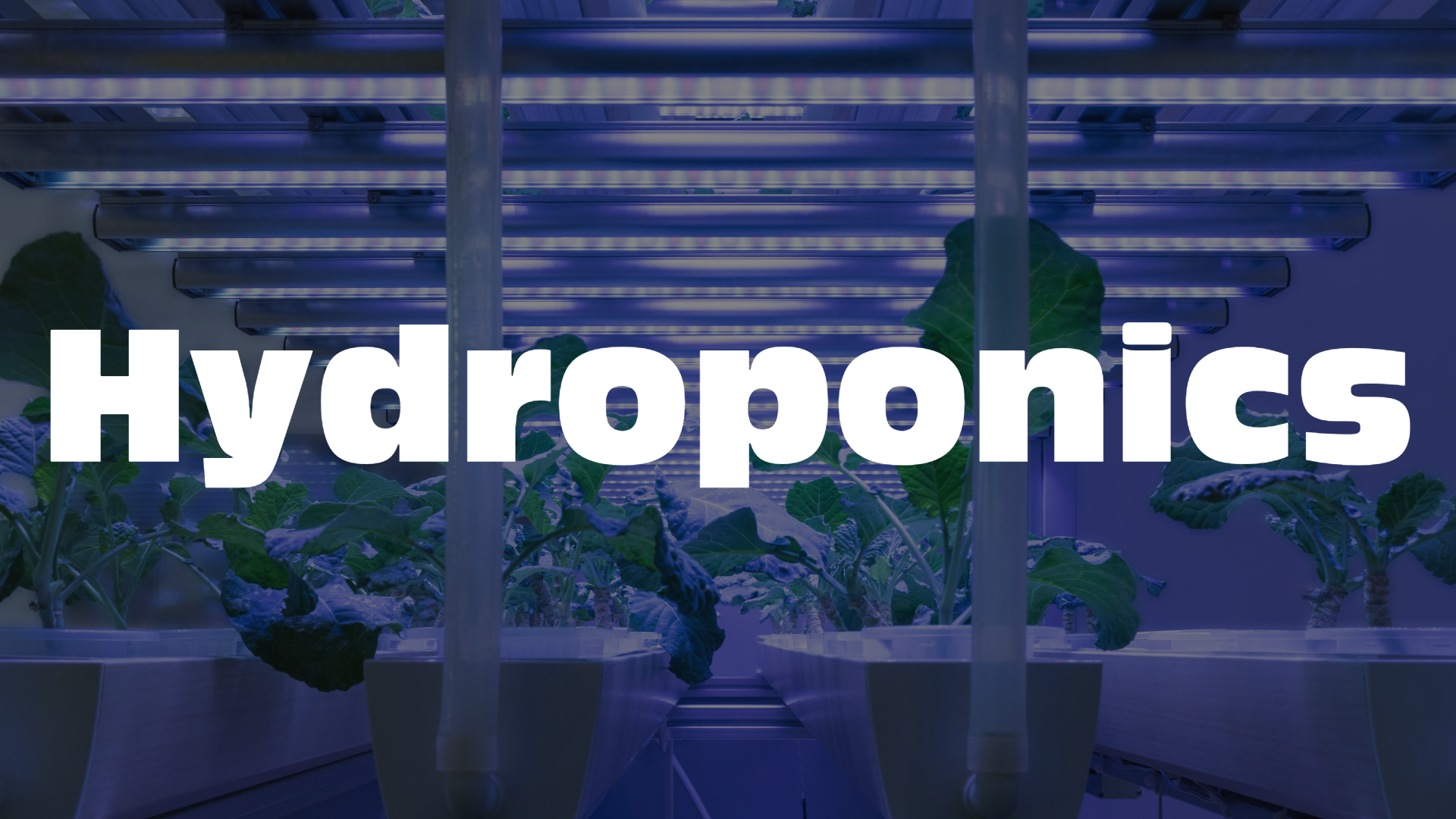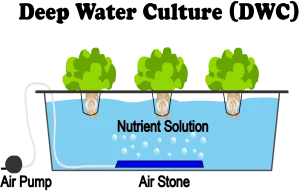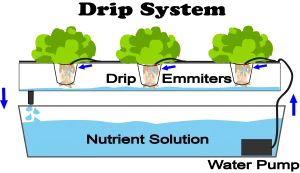
Hydroponics is a soilless method of growing plants in which the roots are directly exposed to a nutrient-rich water solution. This innovative agricultural technique allows for the cultivation of crops without the need for traditional soil. Instead, plants are grown in a variety of inert mediums such as perlite, vermiculite, coconut coir, or simply suspended in a nutrient solution.
In hydroponic systems, growers have precise control over factors such as nutrient composition, pH levels, temperature, and humidity, creating optimal conditions for plant growth. By delivering nutrients directly to the plant roots in a highly efficient manner, hydroponics often results in faster growth rates and higher yields compared to traditional soil-based farming.
Hydroponic systems can range from simple setups such as floating rafts or nutrient film techniques (NFT) to more complex systems like aeroponics or vertical farming. This versatility allows hydroponics to be adapted to various environments, including urban areas, greenhouses, and indoor spaces.
Overall, hydroponics offers a sustainable and resource-efficient method of food production that can help address challenges such as land scarcity, water shortages, and climate change while providing fresh, nutritious produce year-round.
Why Hydroponics?
Hydroponics offers numerous advantages that make it an attractive choice for modern agriculture:
Water Efficiency: Hydroponic systems use significantly less water compared to traditional soil-based farming. Because water is recirculated within the system and directly delivered to the plant roots, there is minimal waste through evaporation or runoff.
Space Utilization: Hydroponics allows for high-density planting and vertical farming, maximizing the use of available space. This is particularly beneficial in urban environments where land is limited, enabling growers to produce more food in smaller areas.
Year-Round Production: With hydroponics, growers can control environmental factors such as temperature, humidity, and light, allowing for year-round cultivation regardless of external conditions. This ensures a consistent supply of fresh produce regardless of the season.
Higher Yields: Plants grown hydroponically often experience faster growth rates and higher yields compared to those grown in soil. This is because nutrients are delivered directly to the roots in an easily accessible form, eliminating the need for plants to expend energy searching for nutrients in the soil.
Nutrient Control: Hydroponic systems provide precise control over nutrient levels, pH balance, and other environmental factors, allowing growers to optimize plant growth and health. This results in healthier, more robust plants with fewer pests and diseases.
Reduced Environmental Impact: Hydroponic farming requires fewer chemical inputs such as pesticides and fertilizers compared to traditional farming, leading to reduced environmental pollution and soil degradation. Additionally, because hydroponic systems are often housed indoors or in controlled environments, they are less susceptible to weather-related challenges such as droughts or floods.
Consistent Quality: By controlling growing conditions, hydroponic growers can produce crops of consistent quality and flavor, meeting the demands of consumers for premium, locally-grown produce.
Overall, hydroponics offers a sustainable, efficient, and versatile approach to food production that addresses many of the challenges faced by traditional agriculture. As the global population continues to grow and resources become scarcer, hydroponics presents a promising solution for feeding the world’s population while minimizing environmental impact.
Types of Hydroponic Systems
There are several main types of hydroponic systems, each offering unique advantages and suitable for different applications. Some of them are explained below.
Deep Water Culture (DWC)

In DWC systems, plants are suspended in a nutrient solution with their roots submerged. Oxygen is provided to the roots through air stones or by circulating the solution. DWC is simple to set up and is ideal for growing leafy greens and herbs.
Nutrient Film Technique (NFT)

NFT systems consist of a shallow, sloping channel through which a thin film of nutrient solution flows, constantly bathing the roots. Plants are placed in small baskets or cups and their roots dangle into the nutrient film. NFT systems are great for growing plants with shallow root systems, such as lettuce and strawberries.
Ebb and Flow (Flood and Drain)

In ebb and flow systems, plants are placed in trays or pots filled with a growing medium such as perlite or gravel. Periodically, the nutrient solution floods the tray, saturating the growing medium and delivering nutrients to the roots. The solution then drains away, allowing the roots to access oxygen. Ebb and flow systems are versatile and suitable for a wide range of crops.
Aeroponics

Aeroponic systems mist the plant roots with a nutrient solution, suspended in the air. This method allows for maximal oxygen exposure to the roots and promotes rapid growth. Aeroponics is often used in space-constrained environments and for growing plants with delicate root systems, such as strawberries and orchids.
Drip Systems

Drip systems deliver a nutrient solution directly to the base of each plant through a network of tubes and emitters. The solution drips slowly onto the growing medium or roots, providing a consistent supply of nutrients. Drip systems are highly customizable and are suitable for a wide range of crops, from tomatoes to peppers.
Wicking Systems

Wicking systems use a wick to passively deliver nutrient solution from a reservoir to the growing medium. This method is simple and requires no electricity, making it ideal for small-scale or DIY setups. However, wicking systems are best suited for smaller plants and may not provide sufficient oxygen to larger crops.
These are the main types of hydroponic systems, each offering unique benefits and suited to different growing conditions and crop types. Growers can choose the system that best fits their needs based on factors such as space availability, budget, and desired crop selection.
Benefits of hydroponics
Hydroponics offers several scientific benefits that contribute to its effectiveness as a method of growing plants:
Optimized Nutrient Delivery: In hydroponic systems, nutrients are dissolved in water and delivered directly to the plant roots in a highly bioavailable form. This allows plants to uptake nutrients more efficiently, resulting in faster growth rates and higher yields compared to traditional soil-based farming.
Precise Control over Growing Conditions: Hydroponic systems enable growers to closely monitor and adjust environmental factors such as nutrient levels, pH balance, temperature, and humidity. By providing plants with optimal growing conditions, hydroponics promotes healthier root development, photosynthesis, and overall plant growth.
Increased Oxygenation: In many hydroponic systems, plant roots are exposed to higher levels of oxygen compared to soil-based growing methods. This promotes aerobic respiration in the roots, which is essential for nutrient uptake and overall plant health. Enhanced oxygenation also helps prevent root rot and other diseases caused by anaerobic conditions.
Water Conservation: Hydroponic systems are inherently water-efficient, as water is recirculated within the system and used more effectively compared to traditional farming methods. Additionally, hydroponic systems can be designed to minimize water loss through evaporation or runoff, further reducing water usage and promoting sustainability.
Reduced Environmental Impact: Hydroponic farming requires fewer chemical inputs such as pesticides and fertilizers compared to traditional agriculture. Additionally, hydroponic systems can be operated indoors or in controlled environments, reducing the need for land conversion and minimizing habitat destruction. This results in lower levels of environmental pollution and soil degradation.
Year-Round Production: Hydroponic systems allow for year-round cultivation regardless of external weather conditions or seasonal limitations. By providing plants with consistent access to nutrients, water, and light, hydroponics enables growers to produce fresh produce continuously, ensuring a steady food supply and promoting food security.
Overall, the scientific benefits of hydroponics contribute to its effectiveness as a sustainable and efficient method of growing plants. By optimizing nutrient delivery, controlling growing conditions, conserving water, and reducing environmental impact, hydroponics offers a promising solution to the challenges facing modern agriculture.
